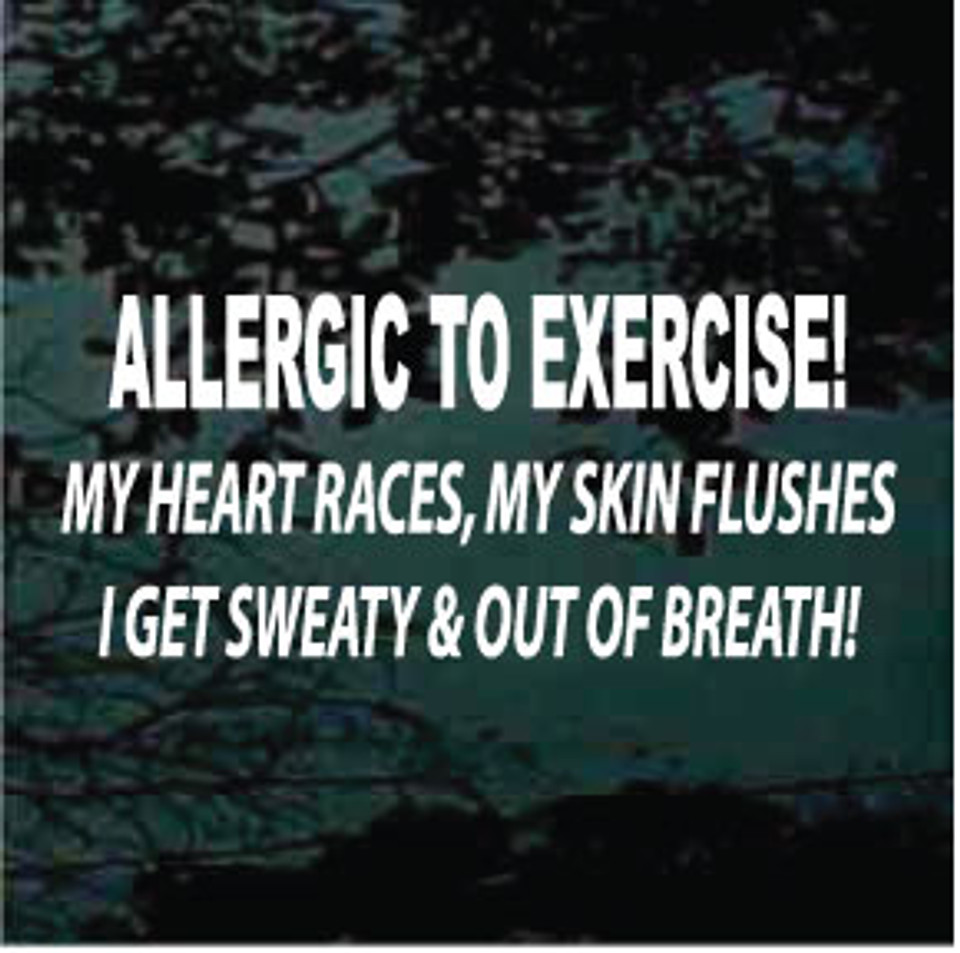
Exercise is essential for a healthy lifestyle, but what happens when your body reacts negatively to it? Being allergic to exercise is a rare condition that affects a small percentage of people. This condition is also known as exercise-induced anaphylaxis (EIA), and it can be life-threatening in severe cases. In this article, we will explore the symptoms, causes, and treatments for being allergic to exercise.
What is Exercise-Induced Anaphylaxis?

Exercise-induced anaphylaxis is a rare condition that causes an allergic reaction to exercise. The symptoms usually occur during or after physical activity and can range from mild to life-threatening. The exact cause of EIA is unknown, but it is believed to be related to a combination of factors, including genetics, environmental triggers, and immune system dysfunction.
Symptoms of Exercise-Induced Anaphylaxis

The symptoms of exercise-induced anaphylaxis can vary from person to person, but some common symptoms include:- Hives- Swelling of the face, lips, and tongue- Difficulty breathing- Rapid heartbeat- Dizziness or fainting- Stomach cramps or diarrhea- Headache- FatigueThese symptoms usually occur during or immediately after physical activity and can last for several hours.
Causes of Exercise-Induced Anaphylaxis

The exact cause of exercise-induced anaphylaxis is unknown, but it is believed to be related to a combination of factors. Some common triggers include:- Certain foods- Changes in temperature or humidity- Medications- Stress- Hormonal changes- Exercise-induced bronchoconstrictionPeople who are already allergic to certain foods or substances may be more susceptible to EIA.
Diagnosing Exercise-Induced Anaphylaxis

Diagnosing exercise-induced anaphylaxis can be challenging because it is a rare condition. Your doctor may perform various tests to rule out other conditions and confirm the diagnosis. These tests may include:- Skin prick test- Blood test- Challenge testIt is essential to seek medical attention immediately if you experience any symptoms of EIA during or after physical activity.
Treatments for Exercise-Induced Anaphylaxis

The treatment for exercise-induced anaphylaxis depends on the severity of your symptoms. Mild symptoms may be treated with antihistamines or corticosteroids to reduce inflammation and relieve itching. Severe symptoms may require emergency treatment, including:- Epinephrine injection- Oxygen therapy- Intravenous fluids- Breathing assistanceIt is essential to carry an epinephrine auto-injector with you at all times if you have been diagnosed with exercise-induced anaphylaxis.
Preventing Exercise-Induced Anaphylaxis
Preventing exercise-induced anaphylaxis can be challenging, but there are some steps you can take to reduce your risk. These include:- Avoiding triggers, such as certain foods or changes in temperature- Gradually increasing the intensity and duration of your physical activity- Carrying an epinephrine auto-injector with you at all times- Informing your exercise partners and healthcare providers about your conditionIt is essential to listen to your body and seek medical attention if you experience any symptoms of EIA during or after physical activity.
Conclusion
Being allergic to exercise is a rare condition that can be life-threatening in severe cases. The symptoms of exercise-induced anaphylaxis can vary from person to person, but they usually occur during or after physical activity. The exact cause of EIA is unknown, but it is believed to be related to a combination of factors. If you experience any symptoms of EIA, it is essential to seek medical attention immediately. With proper diagnosis and treatment, you can still enjoy physical activity and maintain a healthy lifestyle.